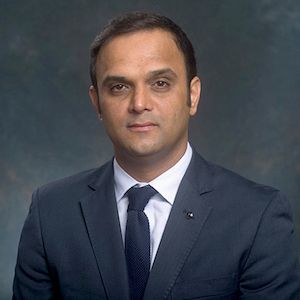Video
Sarcoidosis Screening, Clinical Research Improving with Awareness Efforts
Author(s):
The common conceptions around sarcoidosis depict it primarily as a pulmonary condition. But the rare disease has been long understood by experts as a systemic issue that can burden any system in the body.
In the April 2022 episode of Lungcast, a monthly respiratory health interview podcast series hosted by the American Lung Association (ALA) and produced by HCPLive, Mehdi Mirsaeidi, MD, MPH, Director of the ILD and Sarcoidosis Program at the Jacksonville College of Medicine joined ALA Chief Medical Officer Albert Rizzo, MD, for a discussion on the the screening and treatment foundation of sarcoidosis.
As Mirsaeidi explained to Rizzo, sarcoidosis should be considered an “exclusive disease.”
“We need to find out if the patient has any symptoms, and if you’re concerned about this diagnosis, you need to find out any other diagnoses, root out them, and finalize the diagnosis on pathology—whenever that is applicable and possible,” he said.
For most patients, bronchoscopies and surgical biopsies are viable options for screening. But patients presenting to specialists like Mirsaeidi are facing greater—and more severe—risks. Chief among them: significant respiratory symptoms, recurring infections, and—in about 1 in 5—ophthalmic conditions.
In some cases, Mirsaeidi’s team is receiving referrals based on cardiac or neurological symptoms as well. “So it’s a systemic disease,” he explained. “Every part of the body could be involved.”
Later on, Mirsaeidi discussed the role of inflammation targeting as a key mark of sarcoidosis treatment.
“The backbone of treatment of inflammation is steroids,” he explained. “And steroids for sarcoidosis were approved in the 1970s—(and used) even earlier. For an acute setting, it’s the perfect medication. But whenever you continue that for a longer time, I’m not sure that’s going to be the best treatment alone.”
In any case, the advancement of treatment targeting and research into sarcoidosis pathology—and even screening referrals—have benefitted by a boom of contribution from organizations including American Thoracic Society, American College of Physicians, the European Respiratory Society, and various research foundations. These teams have contributed beneficial expert guidelines and recommendations, and helped set precedent for modern research into the rare disease.
“In the last 10 years, I believe that for many reasons we have better information regarding sarcoidosis, and we have more involvement from primary care clinicians,” Mirsaeidi said.
Listen to the April epsiode of Lungcast below:




